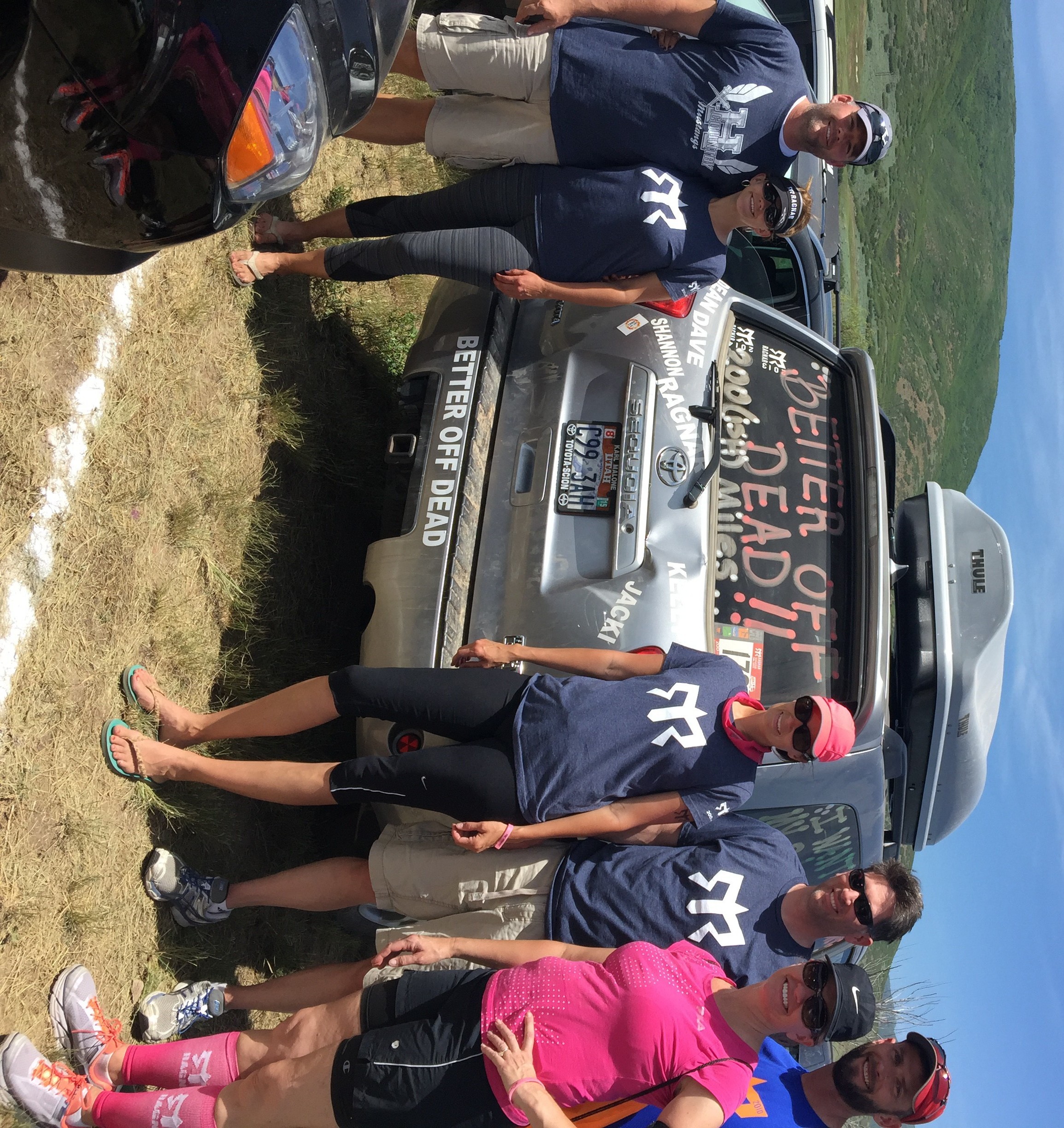I recently ran the Ragnar Wasatch Back 200(ish)-mile relay race with 11 friends. We started at 7 am on Friday in Logan, Utah and ended at about 6 pm on Saturday in Midway, Utah. A few months ago my wife convinced me to join the team. Although I enjoy running, I wasn’t excited about spending two days and a night with little sleep, taking turns running almost a marathon distance.
However, I have to admit: It was more fun and rewarding than I could have imagined. I’ve been bit by the Ragnar bug, and we’re already planning for next year.
One of the benefits of being pushed to your limit is the lessons you learn. Here are three of the lessons my Ragnar experience taught me:
1. Prepare under conditions similar to performance
I ran a lot to prepare for Ragnar. I followed a half marathon training plan, and I was well prepared to cover my assigned legs at my expected pace.
However, I had two problems. I don’t like running in the heat, and I don’t like running hills. I mostly skipped both in my training. Unfortunately, two of my three legs were in 90+ degree heat, and two of my three legs had over four times the elevation gain than any of my training runs (my longest run was up a hill in the heat).
It was a good reminder to prepare under conditions similar to performance.
It’s easier said than done. Preparation under realistic conditions is difficult.
Giving a speech is a good example. Writing and practicing can be tedious and boring. It’s good to run through the finished product a few times in your head to make sure you know the material and can speak without notes. It’s good to video yourself giving the speech. It’s better to give the speech to a friend or family member who will pretend to be a real audience and will give you honest feedback.
I recently gave a speech I thought I was prepared for, but I hadn’t practiced it under real conditions. I got distracted and lost my train of thought when someone came in late and whispered to a few people as they tried to find a seat. I should have been prepared for real-world conditions.
2. Leave no regrets
Athletic performance in particular can be painful, but other performances can also be physically, emotionally, and mentally taxing. Examples Intense negotiations, international business travel, and video shoots.
In these situations it’s tempting to back down before you’ve really given it your all. However, our bodies and minds can take much more than we think they can.
As long you're not causing long-term damage, such as by running on an injury, you shouldn’t stop just because you think you've reached your limits. If you give up prematurely, once you’ve had a chance to recover you’ll know you could have done better.
There are times at Ragnar (remember the hills and heat) when I held back and told myself that I was just there to have fun without pushing myself too much. As I look back on my pace, I regret that I didn’t push myself harder. Not that my Ragnar pace is all that significant, but athletic performance is good practice for doing my best in other areas of life.
Of course, I’m talking about temporarily pushing yourselves to your limit. Pushing your limits day after day without recovery will take a long-term toll. But don’t be afraid to push yourself to the limit for a day, a week, or even a month, as long as you build in sufficient recovery in between.
My biggest fear about Ragnar was not getting enough sleep. I value my 7-8 hours of sleep every night, and I don’t think I function well on less. However, I really only got about 1 hour of sleep during Ragnar (from 5-6 am on Saturday), and I felt fine until Saturday night. I felt even better after sleeping 13 hours that night to recover!
The experience was a good reminder that I shouldn’t be afraid to push myself outside of my comfort zone.
3. Keep good company
Having good company makes pushing yourself to the limit a much more pleasant experience. You can push each other to do better, support each other when having a hard time, and have fun in general.
We had six people in our vehicle, and our 38 hours together flew by. We had a great time.
Life’s too short to spend time with people you don’t enjoy being around. As you look for a job, hire people, start a company, or participant in events like Ragnar, make sure you choose good company.
Athletic events that push you to the limit are a good to learn about life and business. Ragnar taught me that I can push myself to the limit by preparing under conditions similar to performance, leaving no regrets, and keeping good company.
Question: What have you learned about pushing yourself to the limit?

